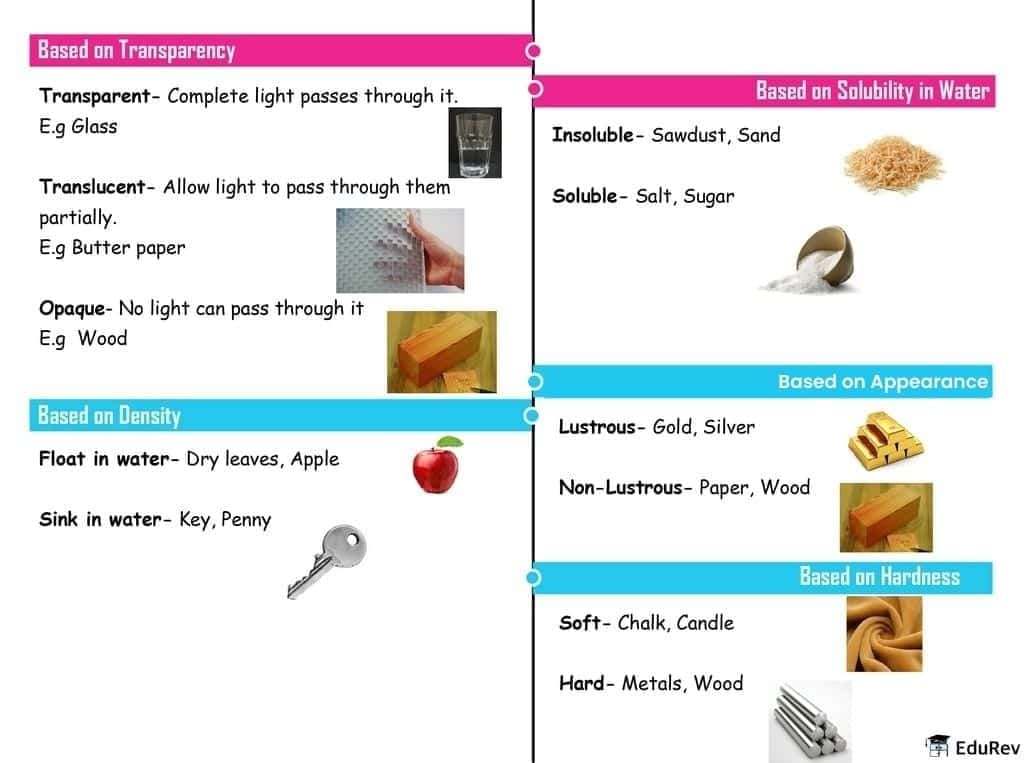Class 6 Exam > Class 6 Notes > Subject-Wise Mind Maps for Class 6 > Mind Map: Sorting Materials into Groups
Mind Map: Sorting Materials into Groups | Subject-Wise Mind Maps for Class 6 PDF Download

The document Mind Map: Sorting Materials into Groups | Subject-Wise Mind Maps for Class 6 is a part of the Class 6 Course Subject-Wise Mind Maps for Class 6.
All you need of Class 6 at this link: Class 6
FAQs on Mind Map: Sorting Materials into Groups - Subject-Wise Mind Maps for Class 6
| 1. What are the different ways to sort materials into groups? |  |
Ans. There are several ways to sort materials into groups. Some common methods include sorting by color, size, shape, texture, and material composition. Sorting by color involves grouping items based on their color or shade. Sorting by size involves arranging items from smallest to largest or vice versa. Sorting by shape involves categorizing items based on their geometric shape. Sorting by texture involves grouping items based on their tactile qualities, such as smooth, rough, or bumpy. Sorting by material composition involves categorizing items based on the materials they are made of, such as plastic, metal, or wood.
| 2. How is sorting materials into groups useful? |  |
Ans. Sorting materials into groups is useful for several reasons. It helps in organizing and categorizing items, making it easier to locate specific items when needed. It also aids in identifying patterns and similarities among different materials. Sorting can also be used as a teaching tool, helping children understand concepts like color, size, shape, and texture. Additionally, sorting materials into groups can be a precursor to other activities, such as counting, matching, or creating patterns.
| 3. Can sorting materials into groups help with recycling? |  |
Ans. Yes, sorting materials into groups can greatly assist with recycling efforts. By sorting materials into groups based on their recyclability, it becomes easier to separate recyclable items from non-recyclable ones. This allows for more efficient recycling processes, as materials can be processed separately according to their recycling requirements. Sorting materials into groups also helps in identifying specific recyclable materials that can be further processed or repurposed for manufacturing new products.
| 4. How can sorting materials into groups be incorporated into educational activities? |  |
Ans. Sorting materials into groups can be incorporated into educational activities in various ways. For young children, sorting can be a fun and interactive way to learn about colors, shapes, and sizes. Teachers can provide a variety of objects or materials and ask students to sort them into different groups based on specific criteria. This activity promotes critical thinking, problem-solving, and classification skills. Sorting can also be integrated into science lessons, where students sort materials based on their properties, such as conductivity, flexibility, or magnetism.
| 5. Are there any online resources or tools available for sorting materials into groups? |  |
Ans. Yes, there are several online resources and tools available for sorting materials into groups. Many educational websites offer interactive sorting games and activities that can be accessed for free. These resources provide virtual materials or objects that can be dragged and dropped into different groups based on specific criteria. Additionally, there are apps and software programs designed for sorting and categorizing tasks. These tools can be particularly useful for classroom settings or remote learning environments, allowing students to practice sorting skills digitally.
Related Searches

















